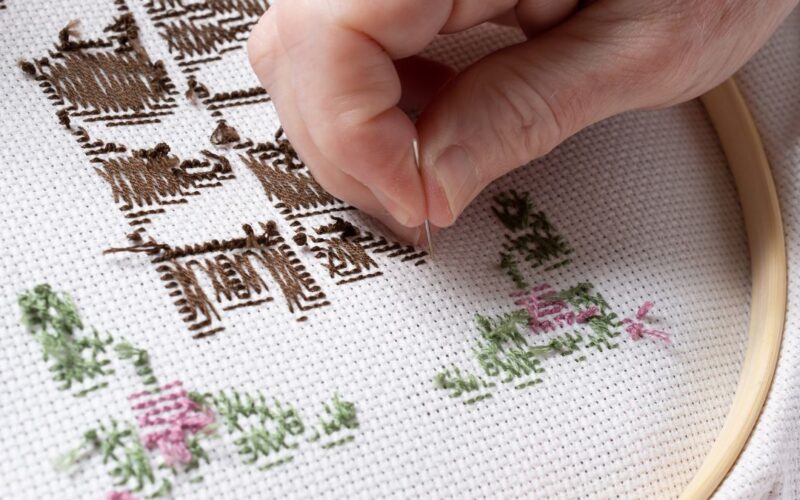A deep art form in the textile industry, chagaras is a word with deep roots in cultural tradition. Chagaras have a fascinating past, dating back to ancient civilizations, and they still fascinate people today with their elaborate patterns and cultural importance.
1. History of Chagaras
The origins of chagaras may be found in ancient civilizations that valued textile art, such as the Egyptians and the Mesopotamians. The modern chakra may be traced back to these ancient cultures, which perfected weaving and dyeing.
2. Cultural Significance
As a representation of one’s cultural background and identity, chagaras are much more than mere fabrics. Using chagaras in ceremonies, festivals, and daily life, many cultures attribute religious, ceremonial, and symbolic meanings to them.
3. Chagaras in Rituals and Ceremonies
Many rites and rituals rely on the presence of chagaras, including births, marriages, and religious festivals. As an emblem of cultural practices and values, they are intricately woven into traditional garments.
4. Chagaras in Modern Society
Chagaras are still popular now, but they’ve adapted to fit more into people’s fast-paced lives. Chagaras have made it into the worlds of fashion, interior design, and art while yet maintaining their traditional processes and designs.
5. Making Chagaras: Traditional Methods
Intricate weaving and dying processes are handed down through generations in the process of manufacturing chagaras. To achieve the rich hues shown in their work, artisans use natural dyes after painstakingly weaving threads with elaborate designs and motifs.
6. Benefits of Using Chagaras
There are several cultural and practical advantages to using chagaras. In addition to being aesthetically pleasing, chagaras are popular among customers because they are long-lasting, airy, and eco-friendly.
7. Sustainability of Chagaras
Concerns about sustainability are on the rise, and chagaras are a great example of a sustainable solution. When opposed to synthetic fabrics, the environmental impact of chagaras, which are made from natural fibers and colors, is modest.
8. Challenges Faced by Chagaras Artisans
Despite the traditional importance of their work, chagaras artists sometimes encounter obstacles in maintaining their trade. Chagaras traditions are in danger of dying out due to economic factors, mass-produced textile competition, and falling demand.
9. Innovations in Chagaras Production
Chagaras artists are adopting new production processes and marketing strategies to adapt to changing times. Some methods that craftsmen are keeping relevant include collaborating with designers, using internet platforms, and adding modern aspects.
10. Chagaras in Global Markets
Chagaras are becoming more well-known in international marketplaces as a result of the growing demand for eco-friendly goods and traditional arts and crafts. Craftspeople are reaching out to customers all around the globe who value chagaras for their genuineness and skill.
11. Environmental Impact of Chagaras
Chagaras’ little influence on the environment is in stark contrast to traditional textiles, which are largely made of synthetic materials and contain dangerous chemicals. Chagaras help make the world a better, cleaner place by prioritizing sustainability throughout their whole lifecycle.
12. Preserving Chagaras Heritage
Protecting the Chagaras Tradition Efforts to maintain the Chagaras tradition is vital to ensuring that this age-old art form is around for the next generation to enjoy. Chagaras customs must be preserved through initiatives like cultural festivals, educational programs, and government backing if they are to endure.
13. Future Trends in Chagaras Industry
As people become more conscious of the need to reduce their environmental impact and value handcrafted goods, the chagaras business should continue to expand. Chagaras will continue to be relevant in a world that is evolving at a quick pace because of the partnerships formed between craftspeople, designers, and customers.
14. Conclusion
Ultimately, chagaras are live proof of the value of cultural variety, inventiveness, and eco-friendliness. Preserving this historic art form for years to come is essential, therefore let us keep sight of the chagaras’ enduring beauty and significance as we embrace modernity.
15. FAQs
1. What are chagaras?
The cultural importance and elaborate patterns of traditional textiles called chagaras have made them famous.
2. How are chagaras made?
Using only natural fibers and colors, chagaras are hand-woven and dyed.
3. What is the cultural significance of chagaras?
Many cultures utilize chagaras in rituals and festivities because of the symbolic, ceremonial, and religious meanings they have.
4. Are chagaras environmentally friendly?
The utilization of natural fibers and colors in chagaras makes them environmentally beneficial.
5. Where can I buy authentic chagaras products?
Artisanal markets, internet marketplaces, and specialized shops that focus on traditional crafts are good places to look for genuine chagaras goods.








